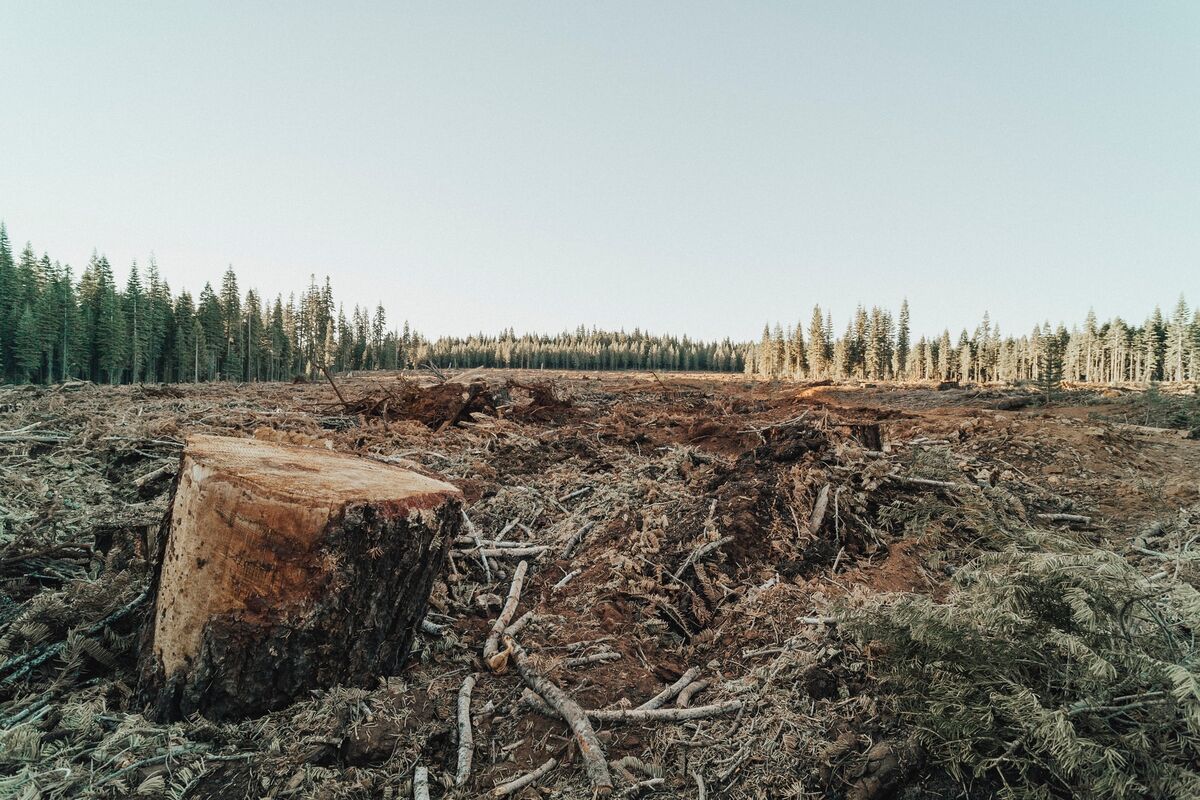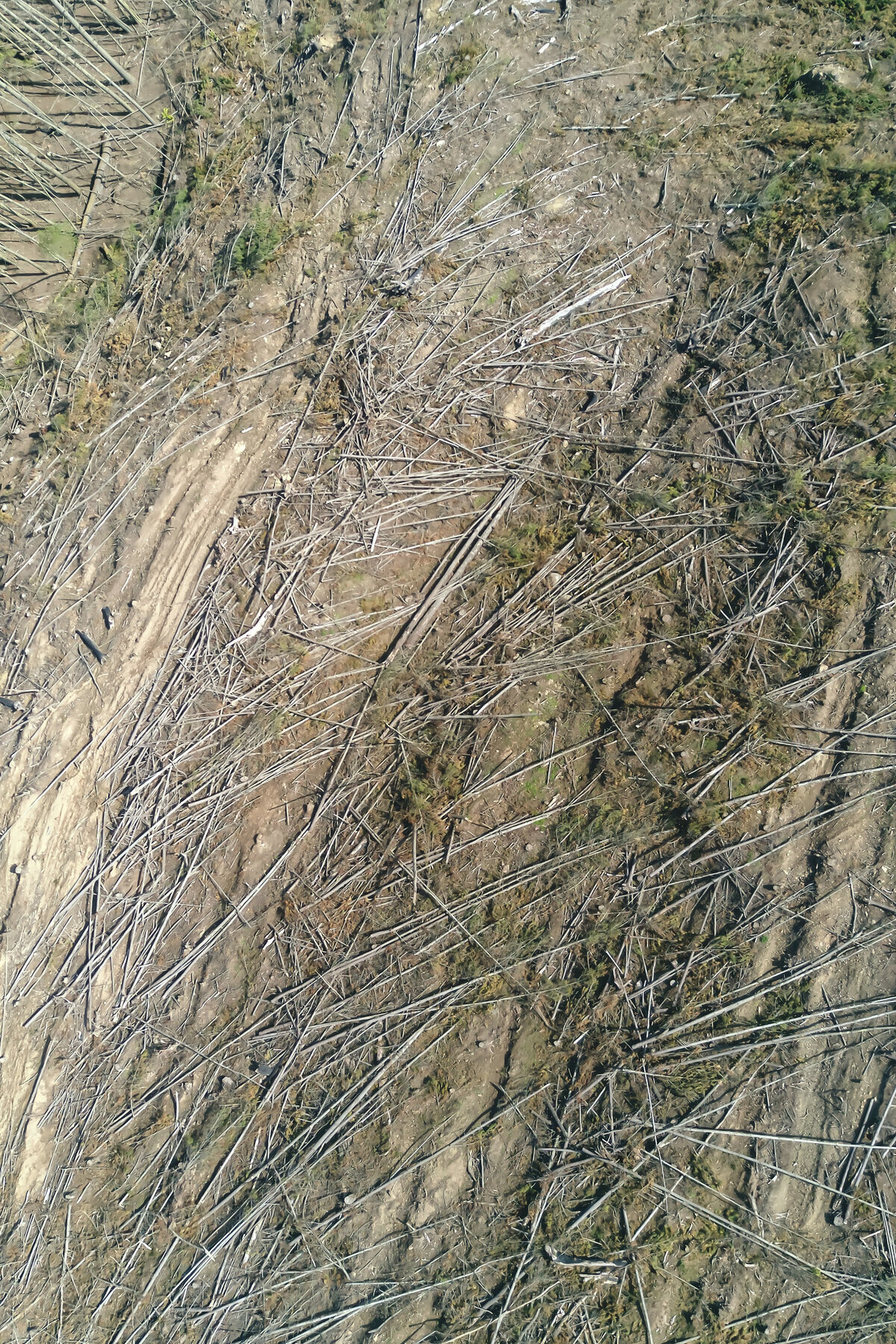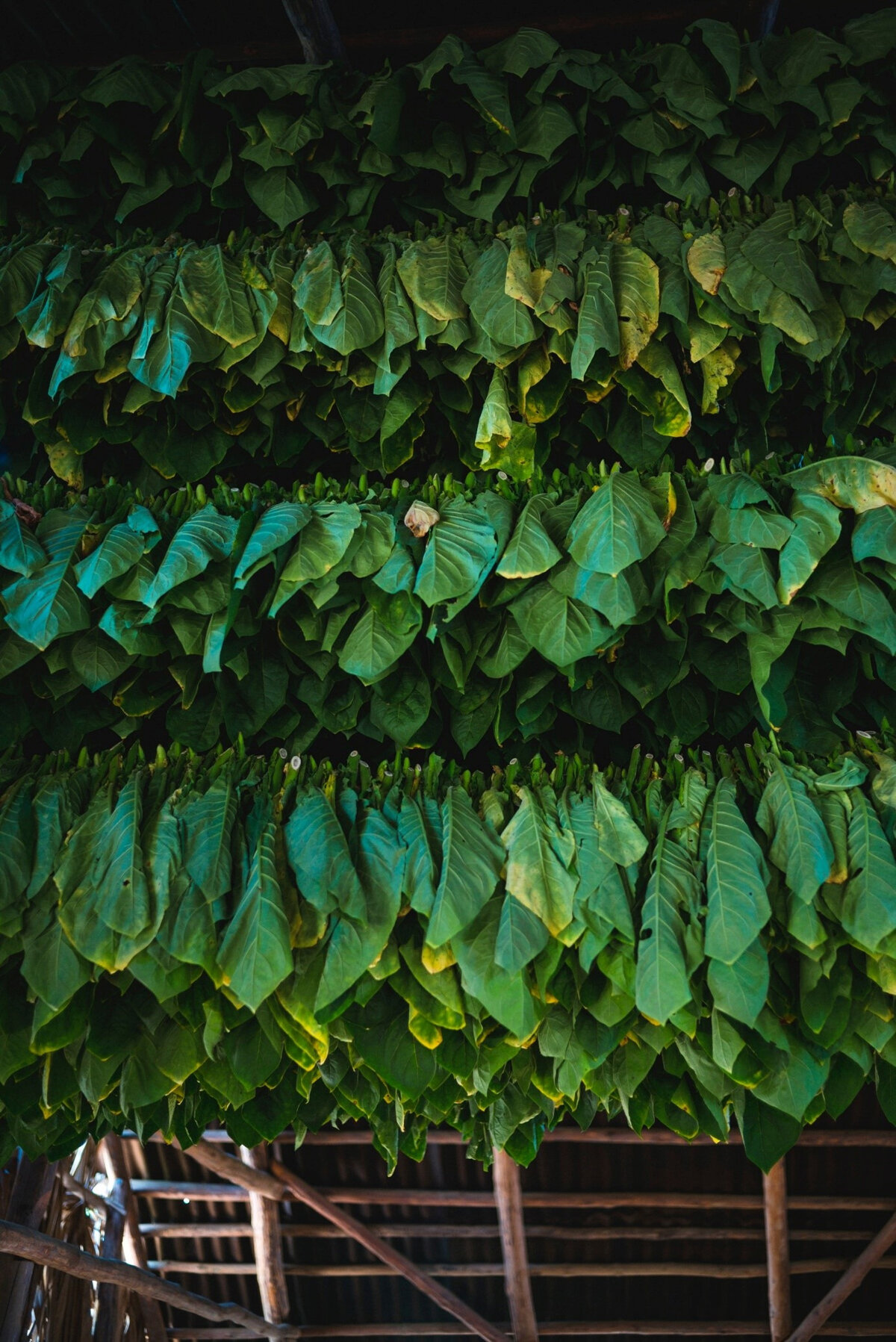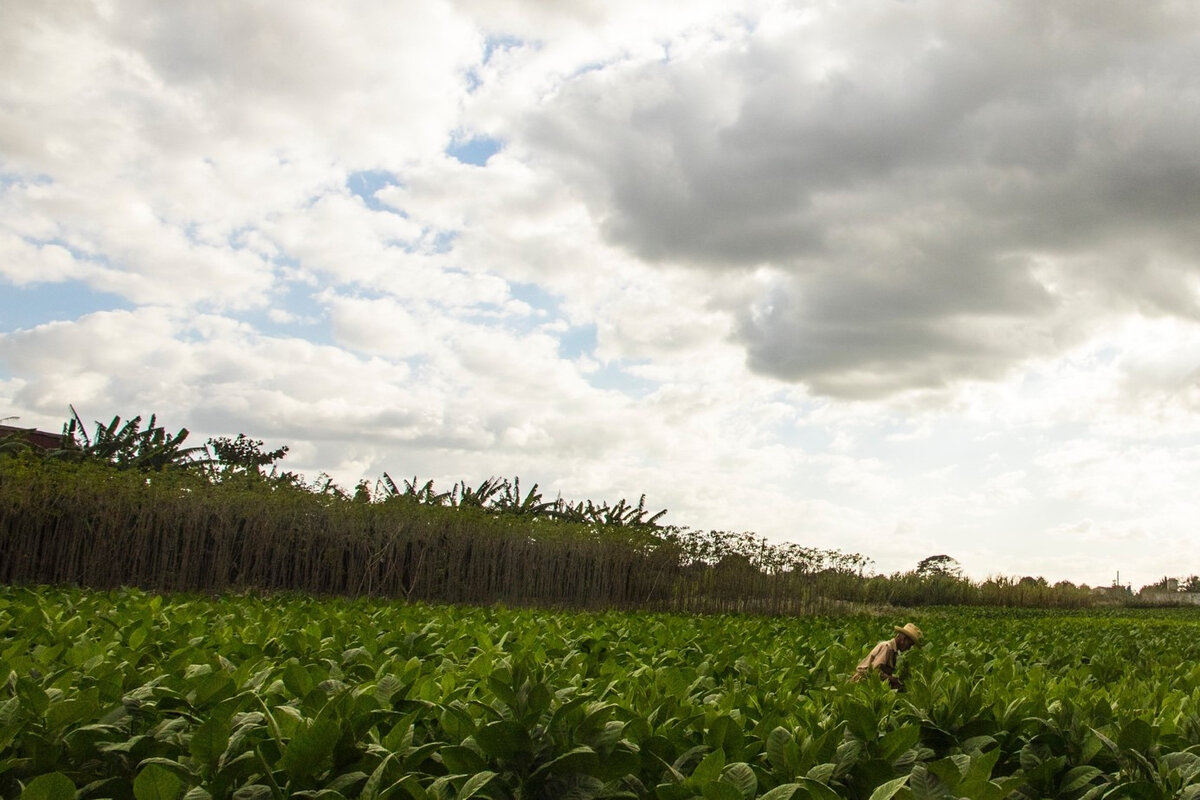- Exchange and Networking
- Knowledge and Learning
- Advocacy
- Our topics
By Kris Schürch
The tobacco industry has widely known negative consequences on public health, with tobacco consumption killing around 8 million people per year. Governments all around the world, as well as medical institutions and civil society, are all aware of the harmful effects of tobacco consumption (World Health Organization, 2009, 2021). Nevertheless, the tobacco industry remains as one of the world's wealthiest sectors globally and has witnessed a rapid expansion in recent decades, as smoking is increasingly taken up in developing regions (Leppan et al., 2014).

The industry produces six trillion cigarettes each year, which are consumed by 1.1 billion smokers throughout the world (Reitsma et al., 2021). Many are unaware that tobacco plays a crucial role in causing climate change and in determining the future of agriculture and food security. Currently, tobacco is grown in over 125 countries as a cash crop, over an estimated area of 4 million hectares (ha), with the harmful effects of the cultivation on the environment particularly apparent in low- to middle-income countries (LMIC) (Jimu et al., 2017; Lorenzo, 2021).
The negative, environmental externalities occur along the whole production and consumption chain –from tobacco cultivation and curing to cigarette manufacturing, distribution, consumption, and disposal. The causes include the use of scarce arable land and water for tobacco cultivation with thousands of ha of woods having been destroyed to create room for tobacco production, as well as fuel for curing the tobacco leaves (Zafeiridou et al., 2018). By the mid-1990s, more than half of the 125 tobacco-growing LMIC were experiencing losses of 211,000 ha of woodland areas annually. In India, for example, 68,000 ha of forests were removed between 1962 and 2002, equalling an average of 1700 ha annually (World Health Organization, 2017).
Tobacco is grown as a cash crop in more than 125 countries and is a major cause for deforestation. Between 1990 and 2007, agricultural development for tobacco production is projected to have resulted in the loss of up to 74,440 ha of forest in Brazil and roughly 13,400 ha in Malawi.
The tobacco plant is very nutrient-demanding, requiring significant inputs of fertilisers, fungicides, and pesticides. This makes agricultural plots unfit for continuous use in many low- and middle-income countries, as these fertilisers and pesticides remain unaffordable to many smallholders. As soil fertility is lost over time in tobacco-growing areas, small-scale farmers responsible for much of the tobacco cultivation resort to clearing new fertile areas of woodlands to allow for continuous tobacco plant agriculture. As the need to produce more tobacco continues to grow, so does the need for more arable lands, which leads to a devastating deforestation cycle with far-reaching environmental, social, and economic consequences. For example, 69% of tobacco farmers in Tanzania were found to clear new areas of woodlands every season, with only 25% using the same plots for tobacco for two consecutive seasons. As a result, Tanzania suffers from one of the highest rates of tobacco-related deforestation globally. These farming practices are amongst the reasons for rising soil erosion, depletion, and pollution.

The negative, environmental externalities occur along the whole production and consumption chain –from tobacco cultivation and curing to cigarette manufacturing, distribution, consumption, and disposal.
Curing is essentially a standardised drying process that allows certain chemical and physical changes to occur. For tobacco leaves, the multistage curing process is highly energy-intensive with coal or vast amounts of wood burnt to generate heat (Musoni et al., 2013). The three most common methods of curing are by air, fire, and flue, which consists of heat-curing without exposure to smoke.
Air curing is accomplished through mechanical ventilation inside buildings, with coal, charcoal, or petroleum gas being burned to provide heat over one to two months’ time. Fire-curing requires an open wood fire on the floor of a barn in which the tobacco is hung. For flue-curing, wood, coal, oil, or petroleum gas is used under the floor of the barn and it requires four to eight days’ time. Flue-curing of tobacco is a major cause of deforestation, particularly in LMIC where farmers will use firewood to flue-cure tobacco, as there are no cost-effective alternatives (Mangora, 2018).
For example, 69% of tobacco farmers in Tanzania were found to clear new areas of woodlands every season, with only 25% using the same plots for tobacco for two consecutive seasons. As a result, Tanzania suffers from one of the highest rates of tobacco-related deforestation globally.
Approximately one tree is burnt to cure 300 cigarettes (Zafeiridou et al., 2018); roughly 7.8 tonnes of wood are required to create a tonne of
cured tobacco. The WHO estimates that 8.05 million tonnes of wood are
used each year solely for flue-curing. This accounts for 2-3% of global
deforestation (Hu & Lee, 2015). Based on data from 2008, tobacco
curing was responsible for about 27% of Pakistan’s total annual
deforestation. In Tanzania, tobacco curing has resulted in the loss of
roughly 11,000 ha of the Myombo ecosystem, which consists largely of
tropical dry forests and woodlands (Zafeiridou et al., 2018). In Malawi, a study on land cover showed that forests that
covered 66% of the study area in 1991 had decreased by 45.8% by 2017.
Interviews with households, Natural Resource Committee members, focus
group discussions, and key officers in Malawi indicated that 69% of
households depend on wood from forests for tobacco curing (Ngwira & Watanabe, 2019).

Approximately one tree is burnt to cure 300 cigarettes (Zafeiridou et al., 2018); roughly 7.8 tonnes of wood are required to create a tonne of cured tobacco. The WHO estimates that 8.05 million tonnes of wood are used each year solely for flue-curing.
Not only are trees fundamental for achieving food security and economic development, but they also improve soil fertility, reduce high temperatures, maintain moisture, and thus reduce the impact of droughts. As the land continues to degrade over time, agricultural yields diminish. As a result, food security is reduced and deep-rooted poverty continues to take hold. The synergies inside forest ecosystems are key not only in stimulating environmental growth, but also crucial for social and economic development (Sanchez et al., 1997; Vira et al., 2015).
Tobacco cultivation, curing, and manufacturing stand out as particularly resource-demanding and environmentally damaging stages in the supply chain. Reducing tobacco production would free up land for more diverse crop farming, providing higher food security in countries where tobacco is favoured over food crops. Tobacco-growing land may be used to grow food crops like potatoes, tomatoes, maize, or wheat, which have all been identified as potentially viable alternatives in quite a few tobacco-producing nations. Furthermore, the output of these crops is often much higher than that of tobacco.

In Brazil, for example, a ha of land might yield more than 3 tonnes of wheat, compared to less than 2 tonnes of tobacco (dry weight). Tomato yields are 25 and 41 times more than tobacco yields in China and the United States, respectively, while a ha of land in Indonesia and Zimbabwe could produce 19 times more potatoes than the 1–1.2 tonnes of tobacco now produced. Furthermore, studies show that farmers who move from tobacco to alternative crops earn more money while spending less time and using fewer inputs than farmers who plant tobacco. In India, for example, economically viable alternative crops to tobacco have emerged in the form of mixed crops of hybrid cotton, chilli, groundnut, and French beans (Zafeiridou et al., 2018).
Furthermore, studies show that farmers who move from tobacco to alternative crops earn more money while spending less time and using fewer inputs than farmers who plant tobacco.
This understanding of the actual environmental costs of tobacco to
society and the environment is crucial for encouraging successful
tobacco control and preventive policies, as well as supporting
sustainable development in nations throughout the world. Clearly ending
tobacco as a cash crop cannot happen overnight. This is why some
countries such as Mozambique and Sri Lanka have implemented some exit
strategies to limit or ban tobacco production in certain areas. More
countries should incentivise farmers and promote economically viable
alternatives to tobacco production (Lorenzo, 2021).